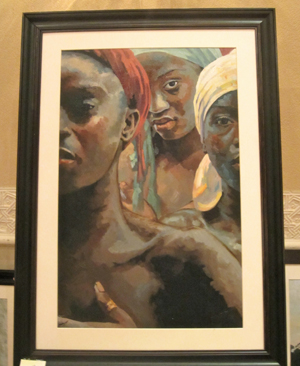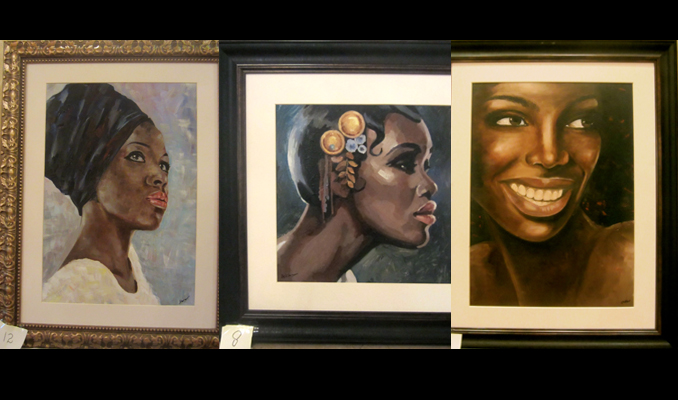
Written by: Mona Khan - Posted on: June 21, 2013 |  Comments
Comments
Google Translation: اُردو | 中文
Gestural, evocative and a retrospective on most notable Art movements in Europe, Naira El-Tablawai's exhibit titled, "Molasses: Black Honey “attempts to highlight the African influences on Modern Art.
Interestingly enough, Tablawai's exhibit challenges the authoritarian status allotted to Modern Art, in the depiction of Primitive Art from Africa. Her assertive tone is reinforced in the gesture of her brush strokes; Calculated yet aggressive, these strokes of oil paint are a referent to the fixation of the early European Modernists, on a land, which they visited often and deemed exotic and primitive. Many contemporary artists today, have centered their practice around the African form and the issue of the primitive.
 |
 |
Although, throughout the history of Modern Art in Europe, there exists an incredible wealth of African Influences on its patrons, yet their depiction, often deemed as voyeurism, is distant. Described as a fascination aroused by the unfamiliar as well as an intrigue of the unknown.
The influence of traditional African aesthetics in the contemporary Post-colonial era is deeply embedded in most artistic practice. The increasing globalization of the art world, nullifies any term that assumes a distinct divide between Art from the Orient or Occident. It is only in the effort to deconstruct and reassess the aesthetic foundations for early modernism that African influences in Modern art will remain relevant.
Unfortunately, the layout of the exhibit lacked any sort of curatorial considerations, as majority of the paintings lay on the ground and tables leaning against the wall. The ornate and inconsistent framing again denotes a disconnect with basic exhibition guidelines. No titles, price lists or a substantial artist statement were provided to guide the viewers. The lack of attention given to the display of the works, undoubtedly compromised the visual integrity of the show.
Mona Khan is a visual artist, curator, designer and French teacher. Currently based in Islamabad
Click to view picture gallery